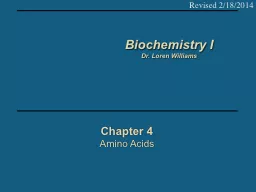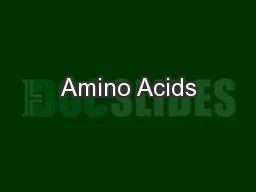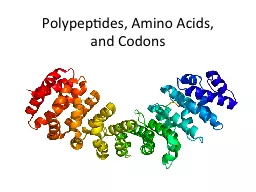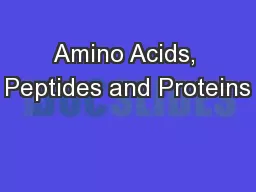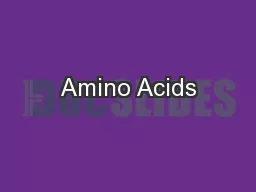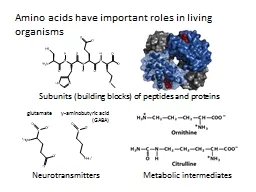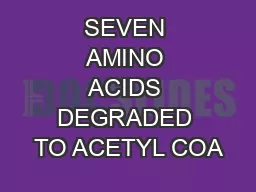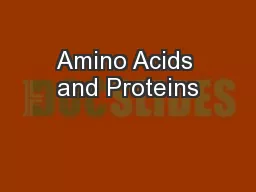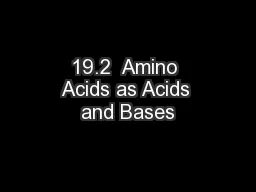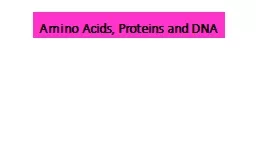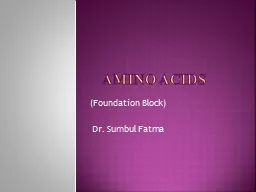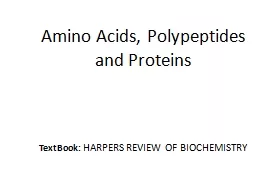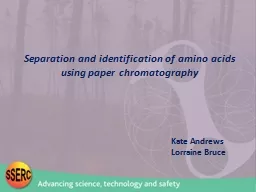PPT-Chapter 4 Amino Acids Revised 2/
Author : liane-varnes | Published Date : 2018-03-11
18 2014 Biochemistry I Dr Loren Williams Proteinogenic Amino Acids An amino acid contains an amine group a carboxylic acid group a sidechain or Rgroup all attached
Presentation Embed Code
Download Presentation
Download Presentation The PPT/PDF document "Chapter 4 Amino Acids Revised 2/" is the property of its rightful owner. Permission is granted to download and print the materials on this website for personal, non-commercial use only, and to display it on your personal computer provided you do not modify the materials and that you retain all copyright notices contained in the materials. By downloading content from our website, you accept the terms of this agreement.
Chapter 4 Amino Acids Revised 2/: Transcript
Download Rules Of Document
"Chapter 4 Amino Acids Revised 2/"The content belongs to its owner. You may download and print it for personal use, without modification, and keep all copyright notices. By downloading, you agree to these terms.
Related Documents

